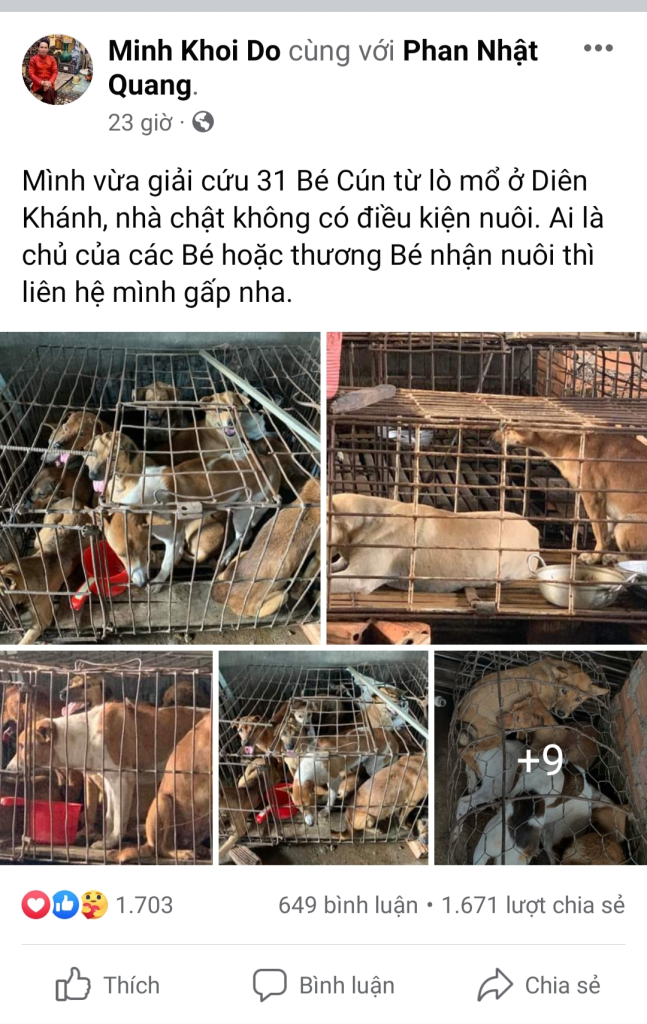
A man from Khanh Hoa Province, south-central Vietnam spent VND24 million (US$1,027) rescuing 31 dogs from a slaughterhouse and is now looking for their owners.
The man, 46-year-old Do Minh Khoi from Nha Trang City, which is the provincial capital, shared the story to his Facebook page on Wednesday.
According to Khoi’s account, his two dogs were stolen while he was on a business trip in Hanoi, prompting him and his son to scour dozens of slaughterhouses between Nha Trang City and Dien Khanh District, also in Khanh Hoa Province, to find their beloved pets.
On Wednesday morning, Khoi arrived at a facility in Dien Khanh and saw dozens of dogs locked in cages, ready to be slaughtered.
He wound up buying all of them from the abattoir in order to save them.
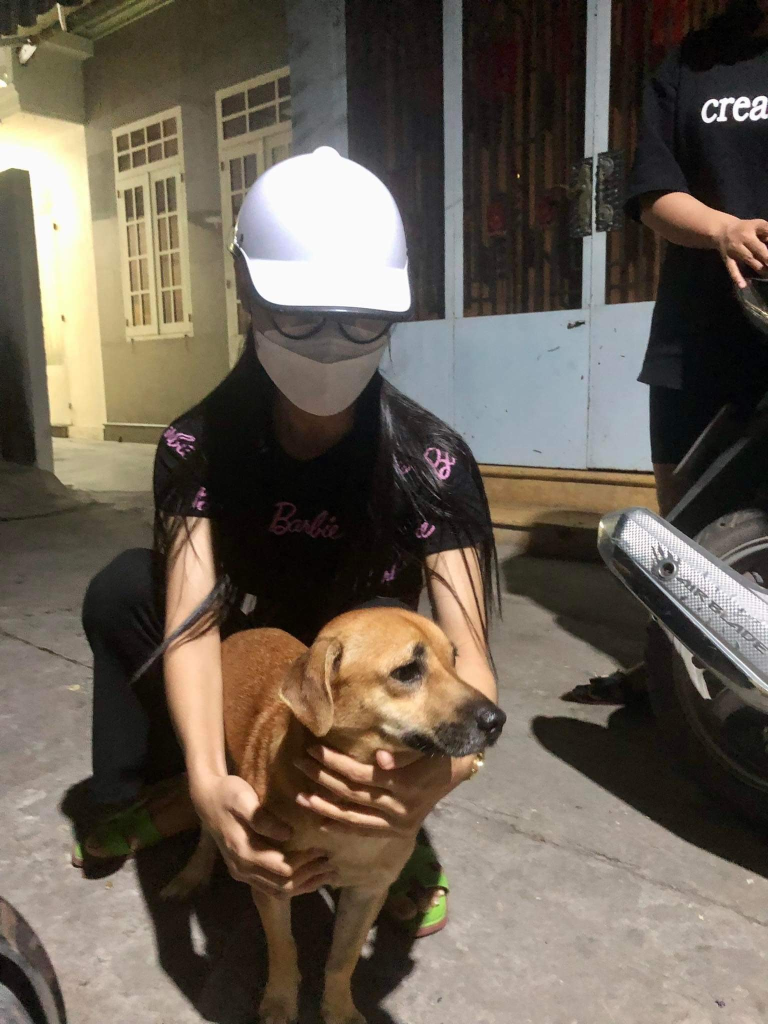
“Many of the dogs were exhausted and lying still, while some were sticking their paws out as if they were asking me to save them,” Khoi recalled.
The man said he paid a total of VND20 million ($856) to buy the dogs and another VND4 million ($171) to transport them to his home in Nha Trang.
Khoi later posted the story on Facebook in the hope of finding each dog’s owner.
As of Thursday, two people had been reunited with their pets thanks to Khoi.
“Seeing the dogs wagging their tails when they saw their owners made me really happy,” Khoi said.
Ha Thuy Tram, 28, from Khanh Hoa’s Cam Lam District, said she lost her dog several days earlier.
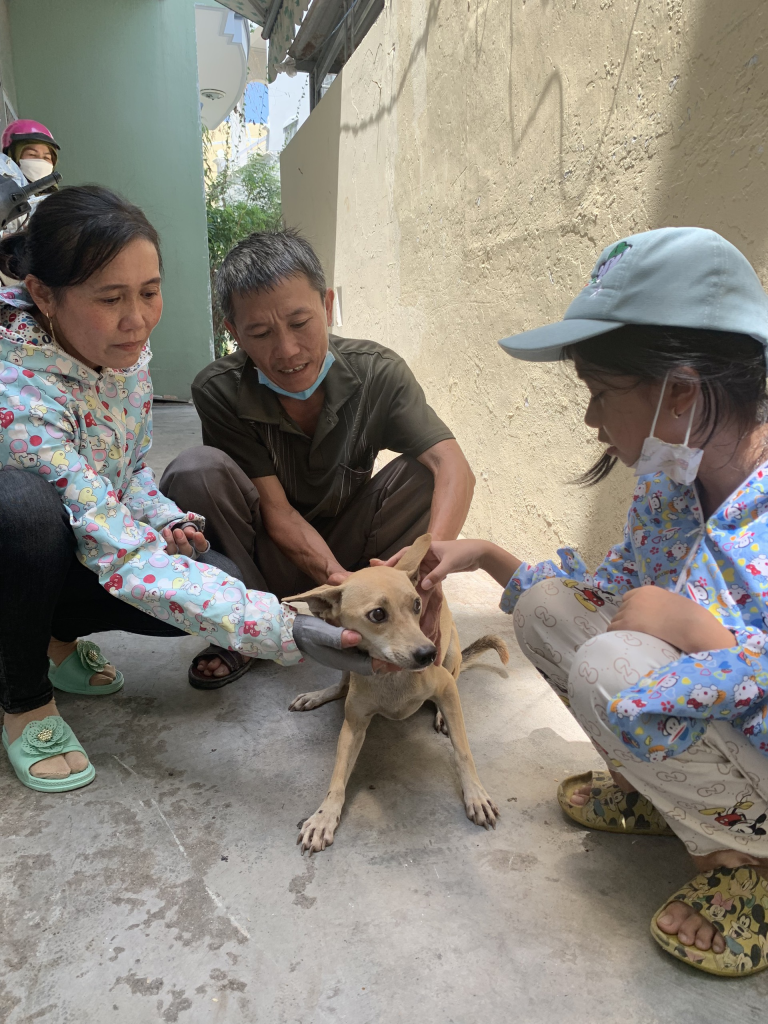
Tram’s family had raised the dog for two years before it was stolen. They searched several dog meat shops and slaughterhouses in the locality after the canine disappeared.
“I discovered that my dog had been rescued after seeing Khoi’s status on Facebook, so I decided to travel all the way to Nha Trang to get my pet,” Tram said.
“I wanted to give Khoi some money to thank him for saving my dog, but he refused it.”
Khoi plans to keep the rescued canines at his home for about seven days so that their owners can come and take them home, afterward he will take the remaining dogs to a local animal rescue shelter.
“People who wish to find their lost dogs can come to my house at 30D Dong Nai Street in Phuoc Hai Ward, Nha Trang City, or call 0909473361,” Khoi said.
As of Thursday, Khoi and his family have yet to find their own lost pets.
Touching rescue: despite her injured nose, the puppy gave kisses as soon as she could.
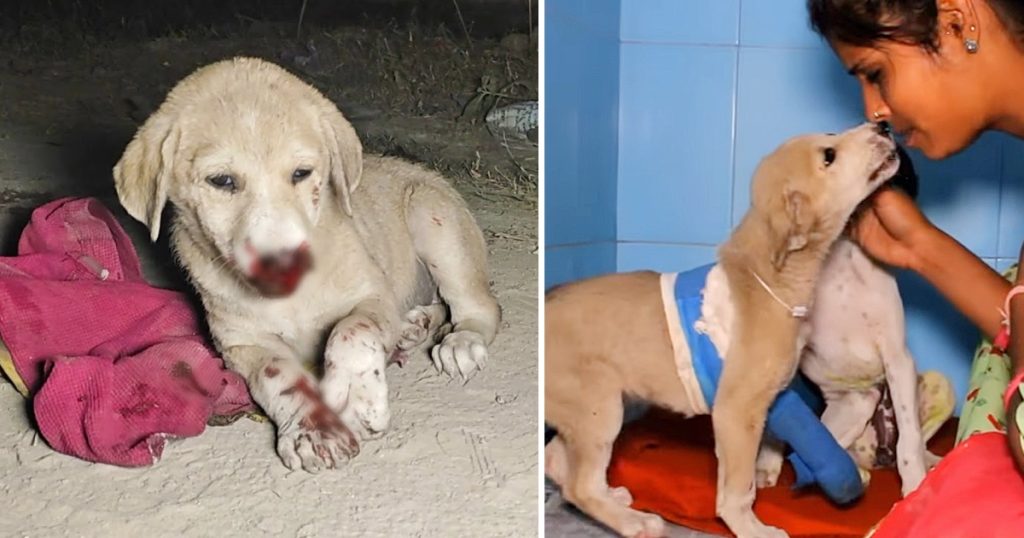
It is a reminder that even in the darkest of times, there is always the potential for kindness and compassion.
This brave little girl was saved by a nice passer-by after her nose bled heavily, splattering her legs with clotted blood. She was put onto a carry-basket and evaluated for injuries, including a seriously sprained leg.
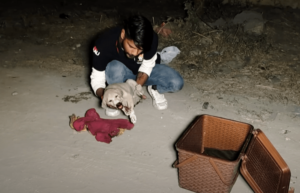
Despite her suffering and bewilderment, she proved to be a tough braveheart. After getting pain treatment, supporting bandages, and many of love, her tail produced a little wag, indicating her life-loving enthusiasm.
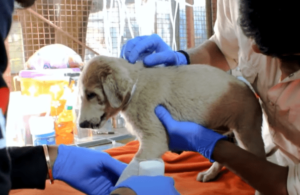
This story of courage and resilience is an uplifting reminder of the strength of the human spirit. It is a monument to the power of kindness and compassion, and how even the tiniest acts of kindness can make a difference in someone’s life.
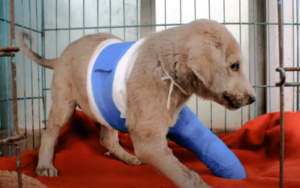
The little girl’s story is a reminder of the necessity of being prepared for medical crises. It is crucial to have a first aid kit on available and to know how to utilize it. It is also important to know how to spot the signals of a medical emergency and to ask for aid if required.

It is also important to be aware of the risks associated with specific activity. For example, if a child is playing outside, it is important to make sure they are wearing protective clothing and that they are monitored. It is also important to be aware of the potential for injuries and to take actions to prevent them.

Lastly, it is important to remember that even in the most terrible of situations, there is always hope. This little girl’s story is a reminder that even in the face of misfortune, there is always the potential for resilience and courage.

It is a reminder that even at the worst of circumstances, there is still the potential for kindness and compassion.



Leave a Reply